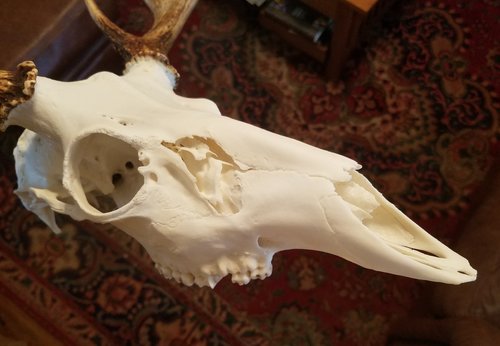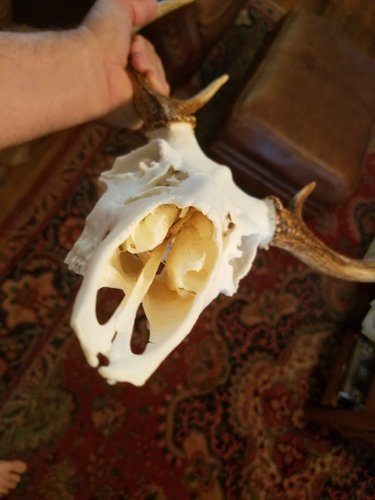Foxtrot1
Well-known member
I've been making my own euro mounts for the past several years and have slowly refined my technique. It's slow, but provides a quality mount that isn't too labor intensive. I've tried boiling, but prefer the quality of skulls cleaned with cold water maceration. Here's a run down of changes I've made that seem to help.
When I have a head I want to euromount, I skin the skull and freeze it until summer when ambient temps will keep water in the desired range (80-90 degrees). If it's something big like an elk, you can proceed in the fall with an aquarium water heater and insulated container, but it will take longer.
As far as skull prep, I now just remove the hide. If you go crazy removing flesh, it will actually slow the process down. I put them in a black garbage bag and leave them in the sun for 3-4 days. Letting maggots feed on it seems to speed up maceration when moved to water. You don't want to wait too long, maggots can damage delicate nasal turbines if you let them grow too big. Transfer skull to a bucket of clean water and let it sit for approximately 1 week. At this point, change approximately 50% of the water. This is the worst part smell wise and it's all down hill after this water change. Change water each week, being careful to leave some for a culture starter. When it's hot down here, a skull will be clean in 2-3 weeks. When the nasal cartilage comes out easily, I will take a stick and scrape off all the loose flesh if any stuck to the skull. I'll give it a week in mostly fresh water after it's clean to "defunk".
At this point the skull is ready to degrease. I initially used dish soap to degrease my skulls, but have had problems with grease leaching out later on and skulls yellowing. This year I changed to using 10% ammonia and heated water, and it seems to be doing a better job. This year, I switched to a food grade container that holds 4-5 gallons of water. I keep it warm with an aquarium heater and add 1/2 gallon of ammonia to enough water to cover the skulls. With this set up, you can see the grease coming out of the skulls. It will cloud the water and form rafts of fat on top of the water. I change the water weekly until it remains clear at the end of the week. My deer skulls took 3 weeks to degrease. They are now being whitened with 40 volume peroxide, this is their second coat. With the new degreasing setup, the skulls are whitening quicker/easier than when I was just using dawn.
These antelope in the degreasing tank had all been degreased 7-10 days in soap. This is after 2 days in the heated ammonia solution.
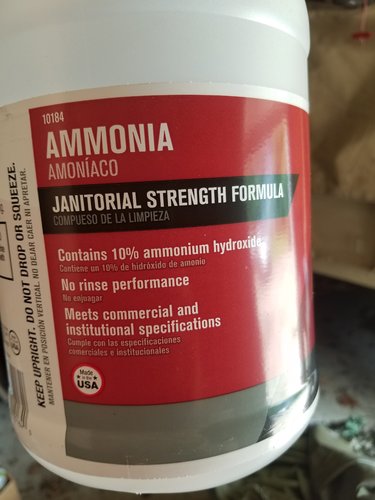
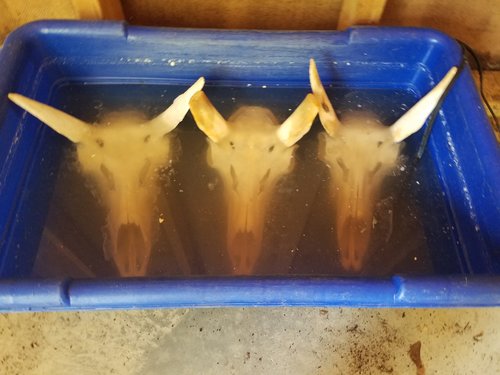
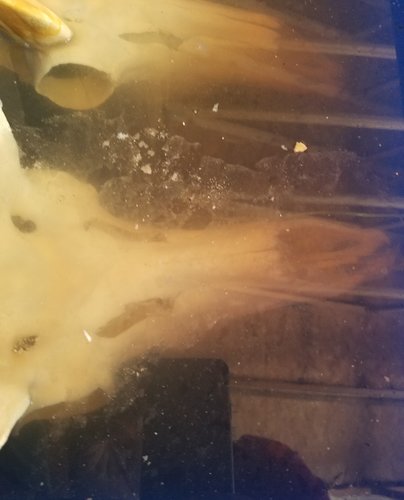
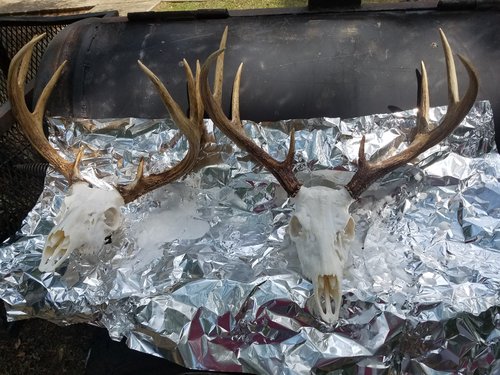
When I have a head I want to euromount, I skin the skull and freeze it until summer when ambient temps will keep water in the desired range (80-90 degrees). If it's something big like an elk, you can proceed in the fall with an aquarium water heater and insulated container, but it will take longer.
As far as skull prep, I now just remove the hide. If you go crazy removing flesh, it will actually slow the process down. I put them in a black garbage bag and leave them in the sun for 3-4 days. Letting maggots feed on it seems to speed up maceration when moved to water. You don't want to wait too long, maggots can damage delicate nasal turbines if you let them grow too big. Transfer skull to a bucket of clean water and let it sit for approximately 1 week. At this point, change approximately 50% of the water. This is the worst part smell wise and it's all down hill after this water change. Change water each week, being careful to leave some for a culture starter. When it's hot down here, a skull will be clean in 2-3 weeks. When the nasal cartilage comes out easily, I will take a stick and scrape off all the loose flesh if any stuck to the skull. I'll give it a week in mostly fresh water after it's clean to "defunk".
At this point the skull is ready to degrease. I initially used dish soap to degrease my skulls, but have had problems with grease leaching out later on and skulls yellowing. This year I changed to using 10% ammonia and heated water, and it seems to be doing a better job. This year, I switched to a food grade container that holds 4-5 gallons of water. I keep it warm with an aquarium heater and add 1/2 gallon of ammonia to enough water to cover the skulls. With this set up, you can see the grease coming out of the skulls. It will cloud the water and form rafts of fat on top of the water. I change the water weekly until it remains clear at the end of the week. My deer skulls took 3 weeks to degrease. They are now being whitened with 40 volume peroxide, this is their second coat. With the new degreasing setup, the skulls are whitening quicker/easier than when I was just using dawn.
These antelope in the degreasing tank had all been degreased 7-10 days in soap. This is after 2 days in the heated ammonia solution.








